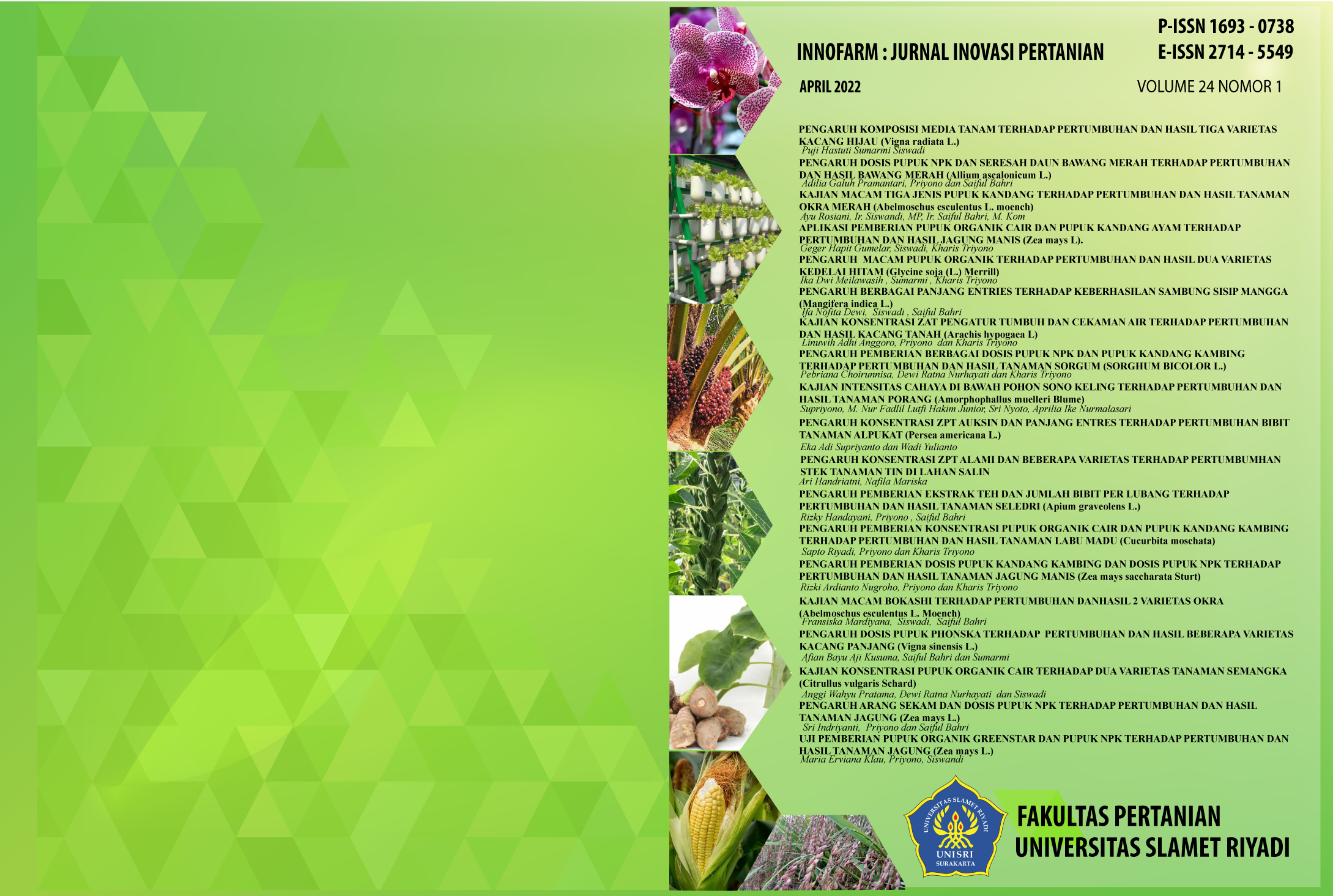Effect of Various Lenght of Scion on The Success of mango Side Grafting (Mangifera indica L.)
of Various Lenght of Scion on The Success of mango Side Grafting (Mangifera indica L.)
DOI:
https://doi.org/10.33061/innofarm.v24i1.7189Abstract
This study entitled The Effect of Various Lengths of Entries on the Success of Insertion of Mango (Mangifera indica L.). with the aim of knowing the effect of various lengths of entries on the success of insertion of mango (Mangifera indica L.). This research was carried out in November 2021 – January 2022 located at the Tohudan Food Crops and Horticulture Garden. This study used a single factor Completely Randomized Design (CRD) experimental design with treatments P1 (4 Cm), P2 (8 Cm), P3 (12 Cm), P4 (16 Cm), P5 (20 Cm). In this study there were 5 types of treatment with 5 replications, each type of experiment contained 2 plants so that there were a total of 50 plants. To determine whether there was an effect of treatment, this study used ANOVA analysis of variance data followed by DMRT test with a level of 5%. Parameters observed were the number of shoots, shoot length, number of leaves, stem diameter, and the success of insertion of finished seedlings. The results showed that the P4 (16 Cm) treatment gave the best grafting results compared to the other treatments.
Downloads
Published
Issue
Section
License
Copyright (c) 2022 Ifa Nofita Dewi, Siswadi Siswadi, Saiful Bahri

This work is licensed under a Creative Commons Attribution-NonCommercial 4.0 International License.
Authors who publish this journal agree to the following terms:
- Authors retain copyright and grant the journal right of first publication with the work simultaneously licensed under a Creative Commons Attribution License that allows others to share the work with an acknowledgement of the work's authorship and initial publication in this journal.
- Authors can separately make additional contractual arrangements for non-exclusive distribution published by the journal (e.g., publish it in a book), with an acknowledgement of its initial publication in this journal.
- Authors are allowed and encouraged to send their work via online (e.g., in the institutional repositories or their website) after published by the journal.


















